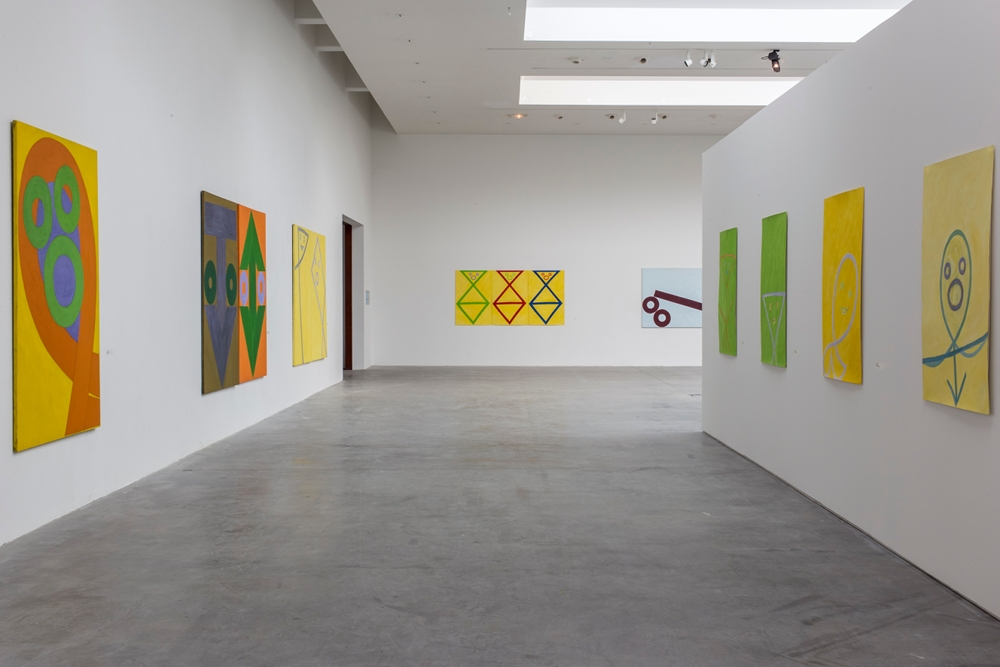
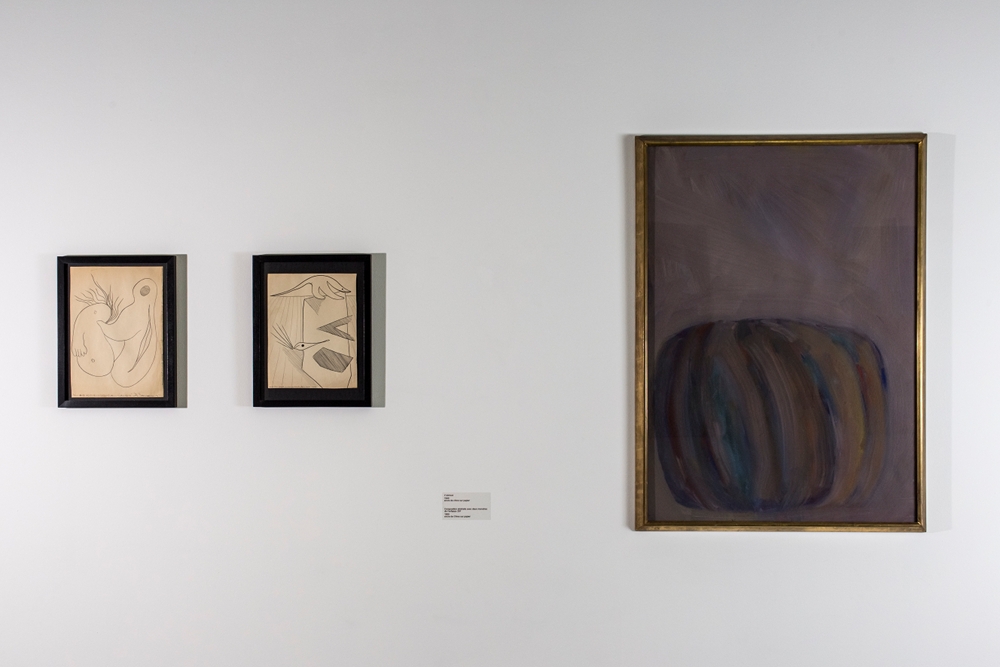
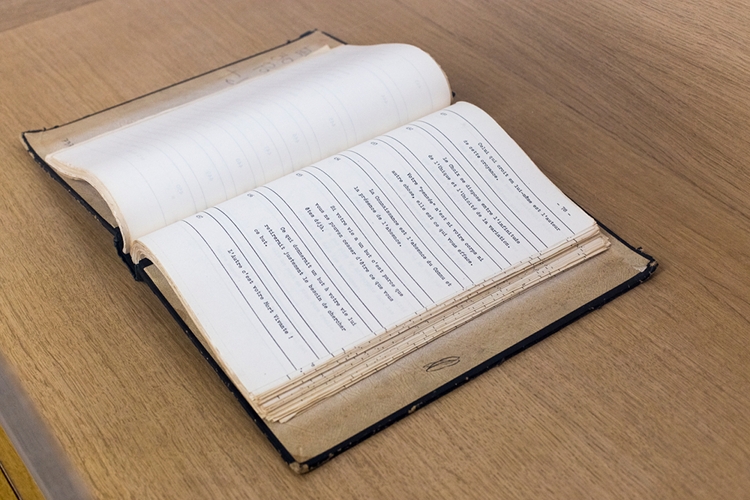


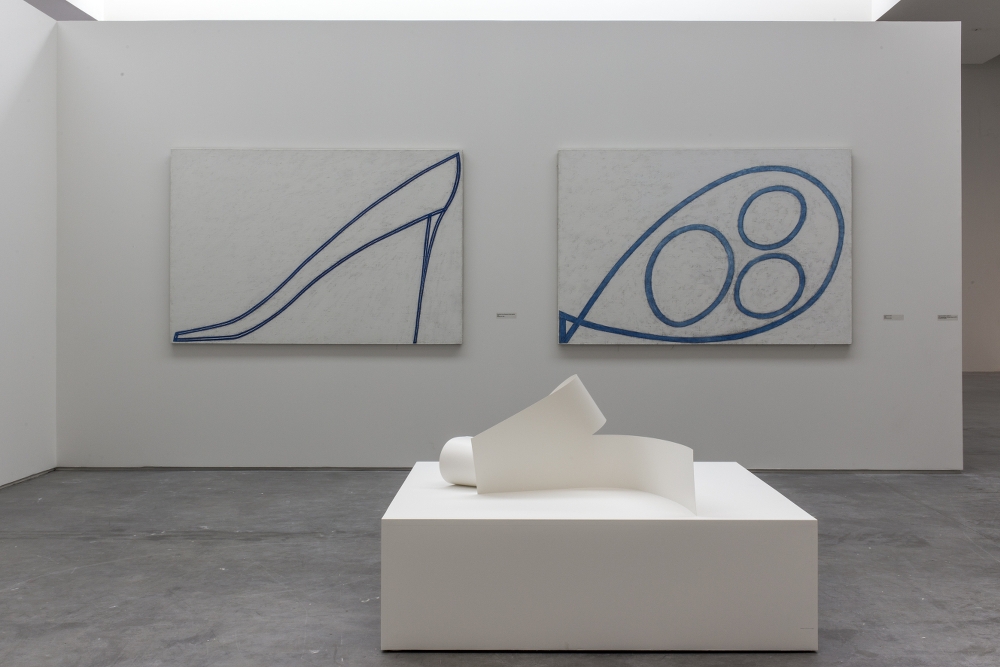
cl : Fanny Trichet
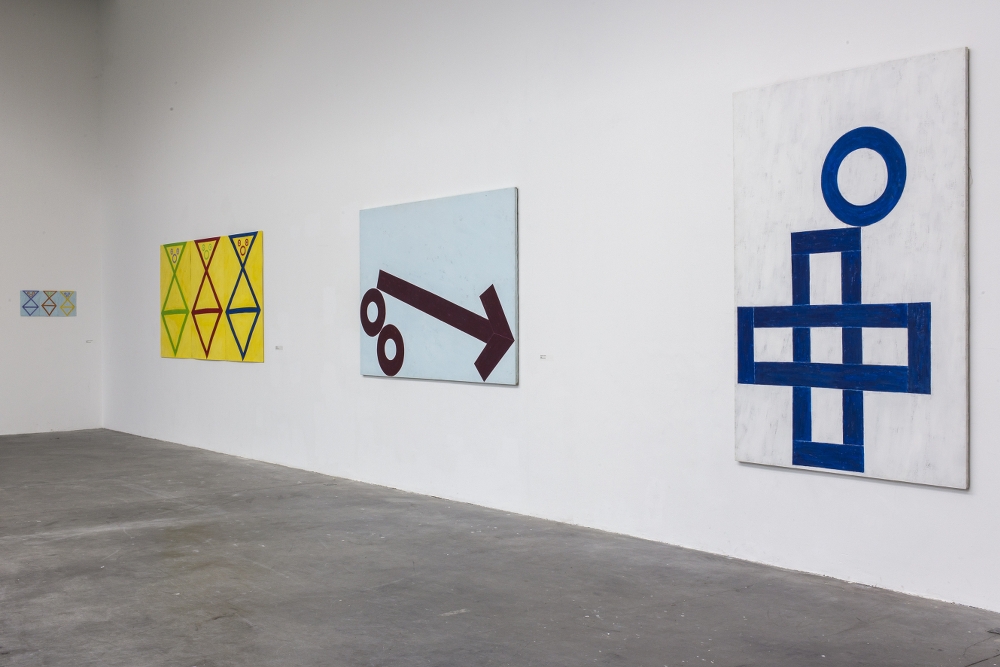
cl : Fanny Trichet
Works from du Frac des Pays de la Loire’s collection.
Boulevard Ampère
44470 Carquefou
free entry
exhibition from 18th March to 28 May 2017
opening time :
from wednersday to sunday: 2pm to 6pm
I didn’t know of the artist Emmanuel Pereire before I came across his works in the collection of the FRAC des Pays de la Loire. We’re not talking about just two or three of the painter’s pictures, but more than 450 pieces, which makes him by far the best represented artist in this public collection. His pictures are oddly naïve, using saturated, simple and perfectly defined colours. Other works, on the other hand, are more sombre, such as these grinning faces, with wings growing from their sides. Hordes of creatures surge forth. They are angels, as the pictures’ titles reveal. Pereire has also painted parts of bodies, feet, hands, grotesque faces, staring eyes and mouths agape, which seem to have been wrenched from the canvas in the turmoil. Schematic little men walk stiffly along in driving rain. A lot of pictures have been rigorously produced, with the expanses of colour precisely delimited in them. Other canvases, conversely, scare us by their unabashed neglect of pictorial requirements, and seem botched. Are they the proof of an artistic powerlessness or a sought-after conscious attitude? Pereire seems not to have been bothered by the format of his pictures. Usually, their size tallies with neither the choice of subject, nor its execution. He often used sheets of paper laid side by said, whose edges were damaged and made ugly by adhesive tape. The choice of materials clearly mattered little to him. Pereire died in 1992, aged 62. Among the impressive list of his exhibitions can be noted various well-known galleries in France and the United States, and a solo show at the MoMA in New York. Pereire also published several writings and called himself an “angelologist”—an angel researcher. In his eyes, angels represented a paradoxical manifestation because, although being creatures from the hereafter, they could perfectly assume material form in our world. In a thick sketchbook, he jotted down more than a thousand quotations about angels, including this one, which appeared in his Livre des Anges/Book of Angels (1976): “Our invisibility condemns us to pure reality”. All those aphorisms are based on a paradoxical line of thought. Perhaps he was acquainted with Pascal’s famous words: “You would not seek me if you had not found me” (Pensées, Bibliothèque de la Pléiade No. 34, p. 1061, Paris, 1940). The paradoxical line of thought, as practiced by Pereire throughout his life, overlaps irrationality with models of logic. It is the proof of an enlightened religiosity which strives to reconcile opposites, as explained by Kierkegaard, a philosopher of paradox if ever there was, in his work Either/Or. As an artist, Pereire felt that he was clearly related to the angels, while being aware of the paradox of his role.
A quarter of a century after his death, Pereire has sunk into oblivion. He is not mentioned in any anthology of 20th century painting--the sole exception being a publication by G.J. Lischka, edited by H.H. Martin, Alles und noch viel mehr (Bern, 1985). This work contains Pereire’s essay titled Manifeste angélique, which we are reproducing here. Respected and exhibited during his lifetime, and even well regarded by the greatest of figures, including Roland Barthes, who wrote the foreword for the catalogue of one his exhibitions, this work has vanished. Why? The Frenchman Pereire often stayed in New York. The large format work of Hard Edge American painters undoubtedly influenced him. Yet, in comparison, his painting remained an unconvinced, hesitant version of those proud pictures, which interrupt space, like those produced by Frank Stella. Was he the victim of a French inferiority complex in the face of the supremacy of American art in the 1970s? Pereire often expressed his admiration for Walter de Maria, whom he regarded as the greatest American artist. This latter had incidentally presented a cosmic “storm of angels” with his installation Lightning Fields in the desert of New Mexico. In Pereire’s pictures, on the other hand, the appearances of angels are very restrained, well removed from the boastful thunder-claps of American art. In the 1980s, Pereire’s work was associated with Bad Painting. A show devoted to this style had been organized in 1978 by Marcia Tucker at the Museum of Contemporary Art in New York. Today, Martin Kippenberger, though absent from the exhibition, is regarded as a very significant representative of that nonchalance which contrasts with an expert and cultivated pictorial art. What is more, when compared with Kippenberger or even Albert Ochlen, we do not find that sarcasm in Pereire--neither that insolence which transgresses boundaries nor that spirit of pictorial inventiveness. His pictures seem simply to be painted with clumsiness and casualness. To all appearances, Pereire has passed through the mesh of the Art World net. His work has not been intercepted by any artistic trend. However, or perhaps precisely because of this resistance to the established order, Periere deserves our attention. Among the 450 pieces in the collection, I have selected 36 works. My choice is very personal. In particular, I have only chosen pieces which meet my own artistic criteria. Many of his works seem to me to have failed, and do not merit exhibition. My choice has been affected by my way of looking at things, trained as I have been in pictorial art over very many years. The historical context, so often brought up, and the immanent artistic discourse have only played a very secondary role in my selection. I have chosen the pictures which, after so many years, are, for me, worthy of being looked at and studied anew.
And also :
Thomas Huber, Extase
Centre culturel suisse, Paris
du 21 janvier au 2 avril 2017
Thomas Huber, Horizon
Musée des beaux-arts de Rennes
du 4 février au 14 mai 2017
Le Livre des Anges tapuscrit est actuellement exposé au Frac. Vous pouvez aussi reçevoir des extraits quotidiennement du Livre de Anges sur notre page Twitter.